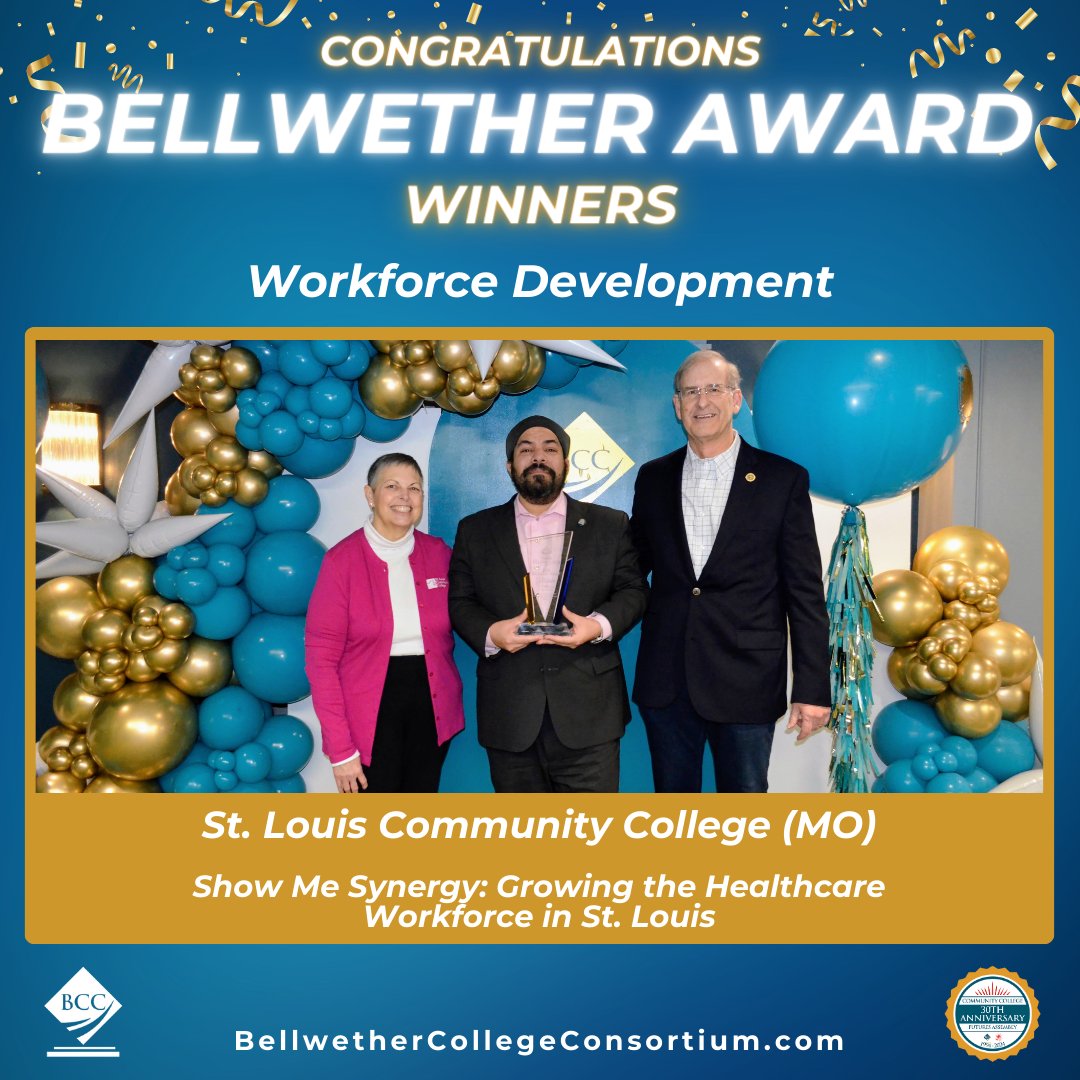Many Meramec students return to campus as the Delta variant looms
BY: JACOB POLITTE
Managing Editor
On Monday, Aug 23, more students returned to campus at St. Louis Community College (STLCC) than prior to March 13, 2020. While the Delta variant of COVID-19 continues to spread across the region and the pandemic is still a concern, STLCC and the Meramec campus continue to have safeguards and procedures in place to ensure a safe return to in-person learning for students.
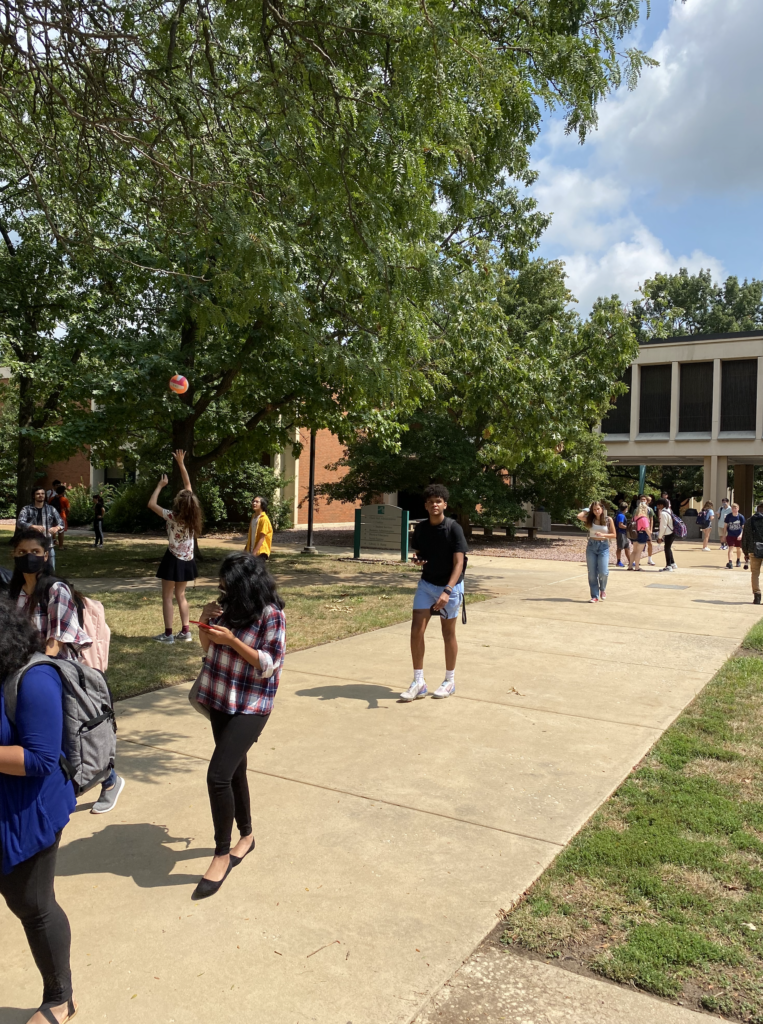
Why return now?
“St. Louis Community College decided to move forward with more on-campus classes at the request of students,” said Nez Savala, communications manager for St. Louis Community College. “The College offers different formats for learning, and in-person classes are what many students prefer and want. STLCC is in alignment with many other colleges in the area such as University of Missouri-St. Louis, Washington University in St. Louis, Saint Louis University, Webster University and St. Charles Community College who are welcoming students to in-person classes for 2021-2022.”
STLCC has made a few revisions to it’s COVID policies in the last few months; for example, mask usage was no longer required at STLCC starting on June 15, but that mask policy was reinstated the following month, regardless of an individual’s vaccination status.
“As we have since spring 2020,” Savala said, “the College will make adjustments for the health and safety of our campus communities based on guidance from the Centers for Disease Control and Prevention and local public health departments. That could mean moving some courses to a virtual learning format, but again, those decisions are made under careful guidance.”
Savala continued, “Throughout the pandemic, the College has made revisions to policies and operating procedures based on CDC and public health guidelines. For example, we know that wearing a mask is effective in minimizing the spread of COVID-19, so masks are required indoors at all STLCC locations. We also know that surface transfer of COVID-19 is not as high a risk factor as it was thought to be, so we’ve made adjustments. Again, the College will continue to make adjustments or changes based on guidance from public health departments and the CDC.”
Administration Reactions
Felicca Moore-Davis is in her third year as president of the Meramec Campus and said she is excited to have students back once more.
“I am very excited to have students on campus,” she said. “The campus is vibrant again, and I’m loving it. Students are the reason we are here, and their presence reminds me of the mission of our campus community.”
STLCC’s Vice Chancellor for Academic Affairs Andrew Langrehr, in his sixth year in the role, also concurs. He said he’s “extremely excited” to have students back on campuses.
“I have been on a couple campuses or centers this [past] week,” he said, “and seeing more activity has been a welcome sight. I helped a few students find their classrooms, and the excitement was obvious in the conversation.”
Moore-Davis said that for the last 17 months, the campus has been quiet. “Staff were working primarily fixed hours and remotely,” she said. “Nonetheless, we were still working to support our students and give everyone a great learning experience. It felt like a long winter on campus; but we were able to see and engage with each other frequently online and remained connected.”
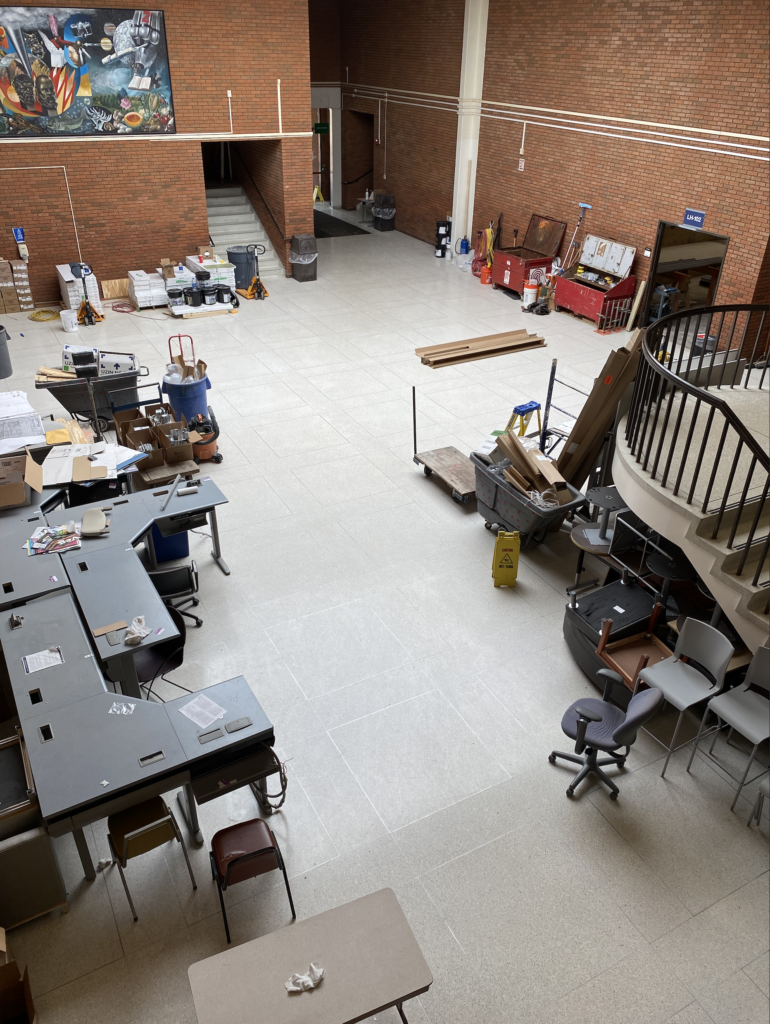
Moore-Davis says that the pandemic has led to some changes and some physical obstacles at STLCC. For example, a construction project inside the Lecture Hall building that was approved in early 2021 by the Board of Trustees was delayed due to global supply chain issues; Moore-Davis says that the project should be completed in early October, but it was originally planned to be complete before the start of the fall semester.
“We are very excited about the renovations happening in the Lecture Halls,” she said. “It was long overdue. We want to improve the student experience in all of our classrooms [and] the Lecture Halls will have updated furnishings and 21st century technology.”
Moore-Davis also spoke about a major change to the campus: the disbanding of the Meramec Campus cafeteria.
“Our contract expired with the vendor,” she said. “This gave the college an opportunity to assess and rethink the area and our service to students. Our assessment revealed students didn’t spend a lot of time in the area and many of the food items were not affordable.”
The Meramec Bookstore has since moved into the space; the atrium of the area still exists as it did before. Fountain sodas are still available for purchase, and a new Kaldi’s coffee kiosk is also set to be installed in the space this week.
“We decided to bring in more affordable and a greater selection of items for our students and employees,” Moore-Davis said.
When asked what would happen to the old bookstore space, Moore-Davis said that had not yet been determined.
“We will be reviewing the bookstore space and making plans to better serve our students,” she said. “We will look for renovations that will make sense for how our students want and need to use that space.”
A more detailed look at the new Meramec Bookstore can be found on page 4 of this issue.
Faculty Reactions
Faculty reaction to STLCC’s observance of social distancing and COVID protocols has been mixed.
Ruth Eilerman has been teaching at STLCC since 2007. She is excited to be physically in front of students again. “[I’m] 100% excited and 0% nervous.”
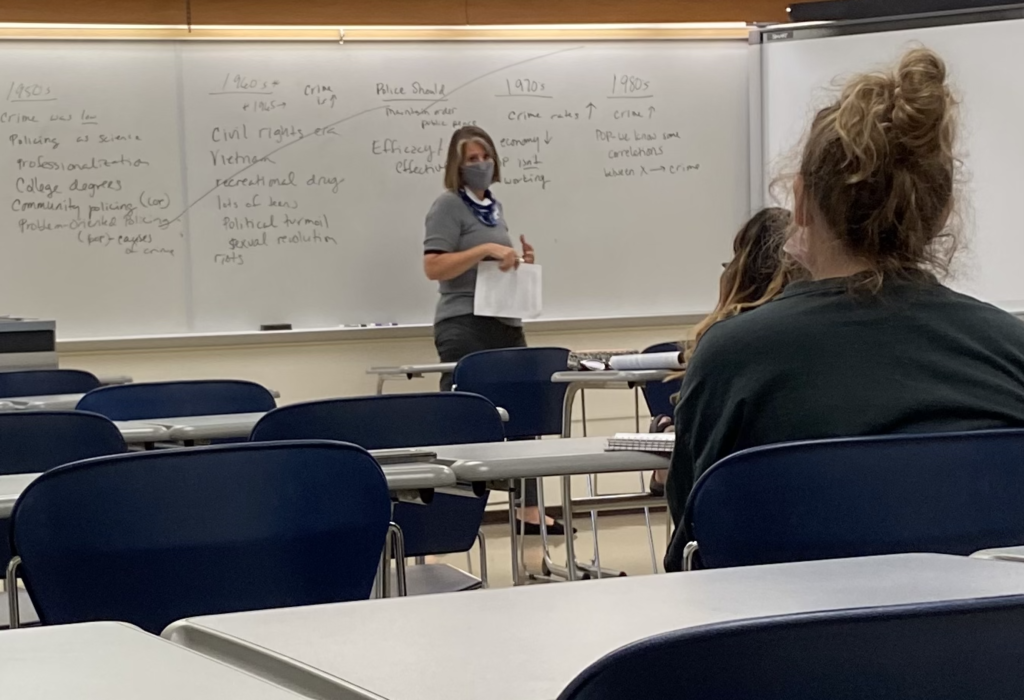
She clarified, “I’m not nervous health-wise. I’m nervous that the bottom might fall out, I’m nervous that things might happen. I’m nervous because I always get nervous the first day before the first day of class, because it’s a brand new situation. So I’m only as nervous as I ever was. Health-wise, I’m not nervous. I’m vaccinated, I feel really good about that and I just really missed being here, so I’m just so excited to be back.”
When asked about the difference between teaching courses in a Live Virtual Lecture (LVL) format and teaching in a classroom again after 17 months, Eilerman said the biggest difference concerns the aspect of student participation.
“People are much more likely to participate in an on-campus class,” she said. “A lot of it is non-verbal cues […] I don’t see that if I just see your initials up on a screen. So being able to see if [students are] looking at me confused, or if you’re looking at me looking like you’re nodding, I can tell whether or not I’m covering the material effectively.”
Eilerman continues, “People were really hesitant to speak up in a Live Virtual class; I had a very small pod of kids that would speak up, [and] most people didn’t. So I was unable to know if they were getting anything out of it.”
She does believe that students like the LVL format. When talking about the number of students that signed up for her Introduction to Criminal Justice classes, she said, “I think that students liked the Live Virtual [format]. They liked the convenience of it. They liked listening to me with one ear while watching TV or not putting on pants or that part of it. So the Live Virtual classes are actually the ones that were better.”
None of Elierman’s classes are at full capacity this semester. Most of her elective classes have lower enrollment, but she says that the college isn’t canceling those smaller classes at the rate they normally might right now. “Normally, [the college] would want a class to be at least 13 people. The administration decided not to cut classes that were low. So they recognized that some people either like the convenience of the LVL, they got enough out of the LVL, or that they’re nervous [about returning to campus].”
Eilerman says that the college did a great job last year with the change-over to online learning.
“I think they have been very responsive as far as making sure that they’re doing things safely and always to the benefit of the students,” she said. “You guys really are the number one priority of the college, 100%. I really admire this institution for that.”
Professor Maxine Beach has a mostly contrasting view. She has been teaching in the English department at STLCC-Meramec since fall 2008, in addition to periodically serving as the faculty advisor for “Currents.”
“I like teaching Live Virtual Lecture, and I know many students prefer it now that we have this option,” Beach said. “Many students work full-time and can’t carve out time to come to campus, but also don’t do well with online asynchronous classes, so the LVL option is the perfect option for these particular students. I like LVLs, because when I teach from home, I use the time when I normally would have been commuting to research, plan lessons, grade, meet with students, etc. I also think LVL type classes are the future of education.”
Beach says that LVL’s cut down on pollution from commuting, they create a safer space for study (as Covid-19 isn’t necessarily the only danger with in-person classes), and they allow more introverted students to participate via the chat function.
But Beach isn’t opposed to on-campus classes. “I do like working with students in person, though,” she said.
When the pandemic shut down STLCC in March of 2020, Beach said that she was impressed by the college’s prompt handling of the situation.
“I thought it was the absolute right thing to do,” Beach said. “I was paying close attention to the news and was aware that we had a global pandemic on our hands.”
In the time since, however, Beach says she’s not pleased with how the return to on-campus classes has been handled by the college. When asked if she believes that social distancing protocols are currently being observed when students are present in the classroom, she said no.
“My in-person class has 25 students and there are 25 seats,” Beach said. “They can’t practice social distancing because there is no room. Fortunately, so far my students are being good about keeping their masks on and over their noses. It’s still a bit unnerving to be teaching in a room where social distancing isn’t possible, especially now with Delta and the breakthrough infections. I do enjoy seeing my students in person, but right now I think it’s risky.”
Beach said she thinks that STLCC may have returned to in-person classes a little too quickly.
“I think we could have delayed packing in-person classes until the pandemic is no longer a pandemic,” she said. “I think we could have met with students in person safely if we had smaller class sizes, but we have packed classes, not all students are vaccinated, and Missouri’s hospitals are overwhelmed right now,” she said. “I hope we don’t have any outbreaks and don’t contribute to the problem, but what we’re doing right now seems very very risky […] there are better ways to safely meet in person. First and foremost, we need smaller class caps so we can practice social distancing.”
Vaccination Questions
Another potential issue that needs clarification considers whether or not instructors can ask students about their vaccination status. Savala says that they can not.
“Faculty cannot ask students about their vaccination status,” Savala said. “Everyone in the classroom should be wearing a mask, vaccinated or not. The only faculty who can ask students about their vaccination status are health science faculty who are designated to review vaccine verification records and any requests for exemption. But, to be clear, generally speaking, faculty cannot ask students about vaccination status.”
Savala’s statement directly contradicts what Meramec faculty was told in meetings prior to the school year. Beach was present at some of those meetings.
“We were told we could ask students if they are vaccinated,” Beach said. “We were told this in a couple of different meetings during Service Week. We were told this via email. We were definitely told this, and so I asked my students in my in-person class to let me know if they are not vaccinated and two people answered. I have to trust people are telling the truth as I cannot ask for proof of vaccination, though.”
When asked about the matter, Eilerman did not recall whether or not faculty was told that they could question students on their vaccination status. “I think because we’re masked right now,” she said, “I think it’s kind of a non-issue. If and when the masks come back off, I’ll make sure that I clarify that.”
When asked, Langrehr did not comment on the matter, but is seeking clarification on it himself as of press time.
While STLCC is not requiring students and faculty to get vaccinations, they hosted two different vaccination events on various campuses last Wednesday and Thursday.
“We know that there are plenty of options for students to get vaccinated if they choose,” Savala said, “but it made sense for us to offer STLCC students free COVID-19 vaccinations. Planning for the on-campus vaccination events started in July. The vaccination incentive for students was made a possibility in recent weeks.”
Savala revealed that STLCC is able to pay for a $100 incentive for students who get a complete COVID-19 vaccination with money from the Higher Education Emergency Relief Fund. This fund is a part of the U.S. Department of Education’s Coronavirus Response and Relief Supplemental Appropriations Act 2021 (CRRSAA).
Data on how successful these vaccination events were has not yet been released.
A look at the new Meramec Bookstore
As mentioned above, the Meramec Bookstore has moved from its long-standing location in the Student Center.
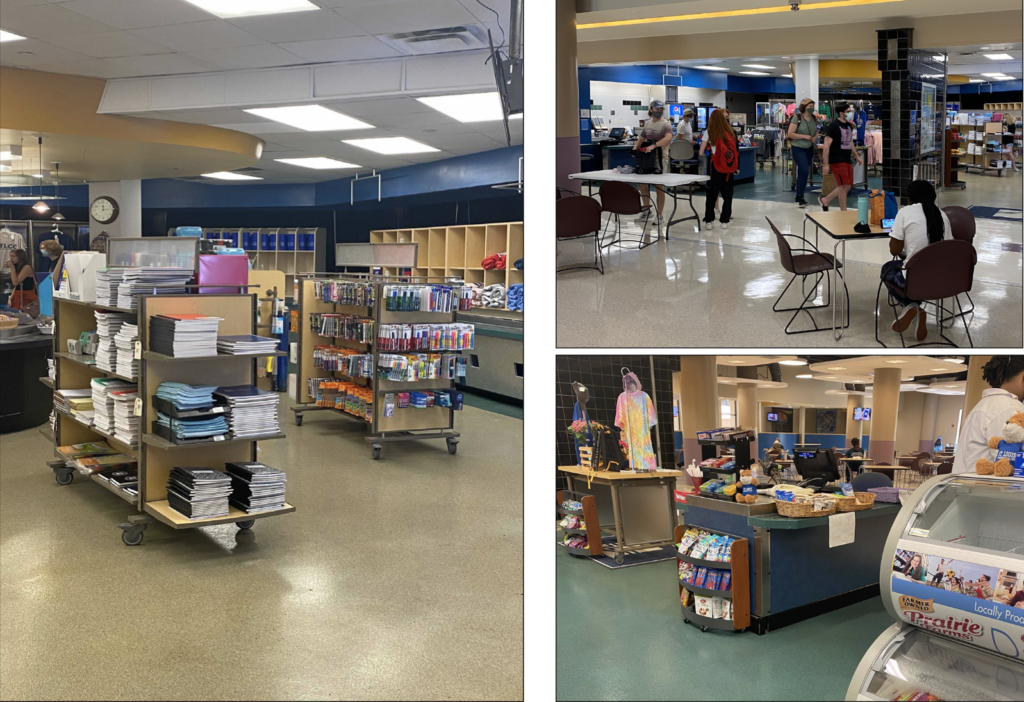
As of this semester, the bookstore is now located in the space formerly known as the cafeteria kitchen. In accordance with the change, the bookstore will now also serve fountain drinks as the cafeteria once did, and a new Kaldi’s coffee kiosk is set to be installed this week.
However, textbooks and access codes must now be purchased exclusively online. Currently, the bookstore’s hours are 9am-2pm, every Monday through Friday.
According to bookstore employees, the old space is currently still being used for storage of textbooks. That area is blocked from view by a large black curtain.











